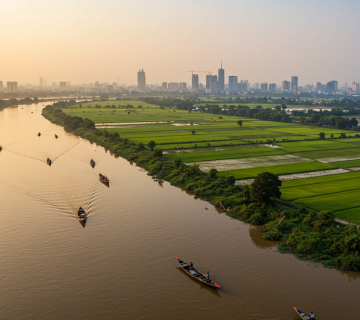🌍 Full English Article: Afghanistan’s Geographical Position and Regional Role
Afghanistan, a mountainous landlocked country in the heart of Asia, holds a unique place in the geopolitical fabric of Eurasia. Bordered by six countries—Pakistan, Iran, Turkmenistan, Uzbekistan, Tajikistan, and China—Afghanistan is a strategic crossroads linking Central Asia, South Asia, and the Middle East. This position has long presented both opportunities and challenges. In this article, we explore Afghanistan’s complex geography and its pivotal role in shaping regional dynamics.
Physical Geography and Climate
With an area of approximately 652,000 square kilometers, Afghanistan is characterized by rugged terrain dominated by the Hindu Kush mountains, which profoundly affect climate, population distribution, infrastructure, and access to natural resources. The eastern Pamir ranges are among the world’s highest altitudes, while the western regions around Herat feature more navigable plains. The central and northern valleys, fed by glacial rivers, form the country’s agricultural backbone.
Afghanistan’s climate is dry and semi-arid, with harsh winters and hot, arid summers. This diversity creates both developmental challenges and unique agricultural potential, especially for crops such as saffron, almonds, grapes, and medicinal herbs.
Borders and Neighboring States
Afghanistan shares borders with:
-
Pakistan (~2,400 km): The longest and most politically sensitive border, vital for trade and migration.
-
Iran (~920 km): A culturally and historically rich connection, with linguistic and religious ties.
-
Turkmenistan, Uzbekistan, Tajikistan: Central Asian neighbors with strong ethnic and economic links.
-
China (~90 km): A short but symbolically important border at the Wakhan Corridor, connecting to Xinjiang.
These borders are not just geographical boundaries—they are also frontiers of water disputes, cross-border trade, migration, and regional influence.
Strategic Location in Eurasia
Strategically, Afghanistan is a central node in Eurasia’s transport and energy grids. Historically part of the Silk Road, it remains a key route for:
-
North-South Corridor: Linking Central Asia to India via Afghanistan and Pakistan.
-
TAPI Pipeline: Transporting Turkmen gas to Pakistan and India.
-
China’s Belt & Road Initiative: Potential links via the Wakhan Corridor to Central Asia and Iran.
Instability has hindered full realization of these corridors, but Afghanistan’s strategic appeal remains strong among regional powers.
Natural Resources and Geostrategic Value
Afghanistan is resource-rich, with significant deposits of lithium, copper, iron, gold, and rare earth elements—key to the tech industry. These untapped reserves position the country as a future global supplier in the energy transition era.
Its rivers, including the Harirod, Helmand, Kokcha, and Amu Darya, are vital for agriculture and a source of tension in water-sharing negotiations with neighbors.
Security and Regional Dynamics
Afghanistan has long been central to global power rivalries—from the “Great Game” of the 19th century to Cold War confrontations, and most recently, as a focal point in anti-terrorism and regional stability debates.
The country’s impact on regional security—migration, extremism, narcotics, and cross-border insurgency—is profound, affecting Iran, the Central Asian republics, and even China’s Xinjiang region.
Opportunities and Challenges
Opportunities:
-
Economic connectivity between South and Central Asia
-
Access to strategic mineral resources
-
Investment in infrastructure and renewable energy
-
Balancing influence among major regional actors
Challenges:
-
Political instability and lack of inclusive governance
-
Proxy rivalries and foreign interference
-
Transnational security threats
-
Humanitarian crises and migration waves
Conclusion
Afghanistan’s geography is not merely a backdrop—it is a driving force in its historical fate and regional significance. Located at the intersection of four major civilizations, the country’s strategic location offers immense potential, yet remains largely unrealized due to instability. As regional dynamics evolve, Afghanistan could emerge as a vital connector and energy corridor in Eurasia—if it can forge stability and leverage its position for inclusive development and strategic cooperation.





No comment